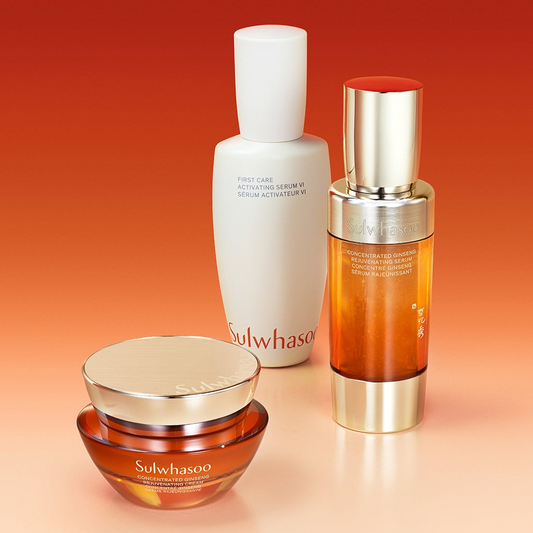When Sulwhasoo, Amorepacific’s luxury K-beauty line, decided to enter the competitive U.S. skincare market in 2022, it faced a daunting challenge: translating centuries-old Korean herbal traditions into a language resonant with American consumers.
Enter Tina Lee, a 29-year-old Korean-American skincare influencer with 850k Instagram followers. Her collaboration with the brand didn’t just boost sales—it became a case study in how mid-tier influencers can serve as cultural ambassadors for Asian brands eyeing Western markets.
Lee, a New Jersey-based former dermatology assistant, had built a niche audience obsessed with her “East-Meets-West” skincare routines.
Unlike mega-influencers, her appeal lay in her relatable, unpretentious reviews and her ability to demystify complex Asian beauty rituals.
When Sulwhasoo approached her, Lee proposed a 12-week campaign centered on education rather than hard selling.
“Americans weren’t familiar with ingredients like red ginseng or jang fermentation,”she explains.
“I needed to show how these could solve their specific concerns, like dryness or aging.”
The campaign’s cornerstone was a series of Instagram Reels and YouTube tutorials comparing Sulwhasoo’s Concentrated Ginseng Cream to popular Western moisturizers like La Mer.
Lee highlighted its lightweight texture—a deliberate reformulation for U.S. climates—and paired it with “hybrid” routines, like layering the brand’s First Care Activating Serum under a French sunscreen.
Her honest critique of certain products (e.g., noting that the thicker creams might not suit oily skin) built credibility. The result? Sulwhasoo’s U.S. sales jumped 72% year-over-year, with 40% of buyers being non-Asian millennials.

Lee’s strategy offers three key lessons for Asian brands targeting the U.S.:
- Position Heritage as Innovation, Not History
American consumers often equate “traditional” with “outdated.” Lee reframed Sulwhasoo’s 50-year-old ginseng extraction method as “biotech-forward,” emphasizing clinical trials and antioxidant benefits. Similarly, Japanese kitchenware brand Zojirushi partnered with food creator Darren Wong to showcase its rice cookers through trendy “fusion” dishes like quinoa bibimbap, distancing itself from being a “nostalgic” import.
- Leverage Micro-Communities
Rather than chasing broad demographics, Lee tapped into micro-communities like “Skinternists” (skincare enthusiasts) and “Clean Beauty Collectives” on Facebook. She hosted a Reddit AMA (Ask Me Anything) explaining Sulwhasoo’s pH-balancing toners, which drove a 300% traffic spike to the brand’s site. “These groups crave deep dives, not just pretty photos,” says Lee.
- Turn Cultural Nuances into Universal Stories
Lee’s most viral post—a TikTok titled “My Halmeoni’s Secret, Now Yours”—shared her grandmother’s ritual of using ginseng soup for “glass skin,” tying it to modern self-care.
The video garnered 2.1M views, with commenters praising its “personal yet practical” tone. Philippine brand Human Nature replicated this by collaborating with influencer Reese Fernandez on a campaign linking traditional coconut oil remedies to eco-conscious grooming.
![Tina Lee, Of Leather and Lace, Talks Travel and Creativity [Interview]](https://nairanyc.com/wp-content/uploads/2019/12/Tina-Lee-Of-Leather-and-Lace.jpg)
Sulwhasoo, for instance, introduced smaller jar sizes and subscription models after Lee’s followers complained about the price and packaging. Additionally, Asian brands must navigate the U.S.’s preference for individualism.
“You can’t just say, ‘This works for everyone in Korea,’” Lee notes. “You have to say, ‘Here’s how you can make it work for you.’”
The payoff, though, is substantial. Post-campaign, Sulwhasoo gained placement in U.S. luxury retailers like Nordstrom and Cult Beauty—a rarity for Asian brands outside of K-pop-linked labels.
Lee’s collaboration also caught the attention of Brand Labs, a media agency that partners with influencers to secure high-impact coverage in outlets like Millionaire and Magazine Asia.
“Media visibility isn’t just about reach; it’s about validation,” says Lee.
“When international brands see you featured in trusted publications, they’re more likely to take a chance on you.”
For Asian brands, the takeaway is clear: In a fragmented market, influencers like Tina Lee are the bridge between heritage and hype. By investing in storytellers who can turn cultural specificity into universal appeal, companies can transform market entry risks into resonant success stories.


